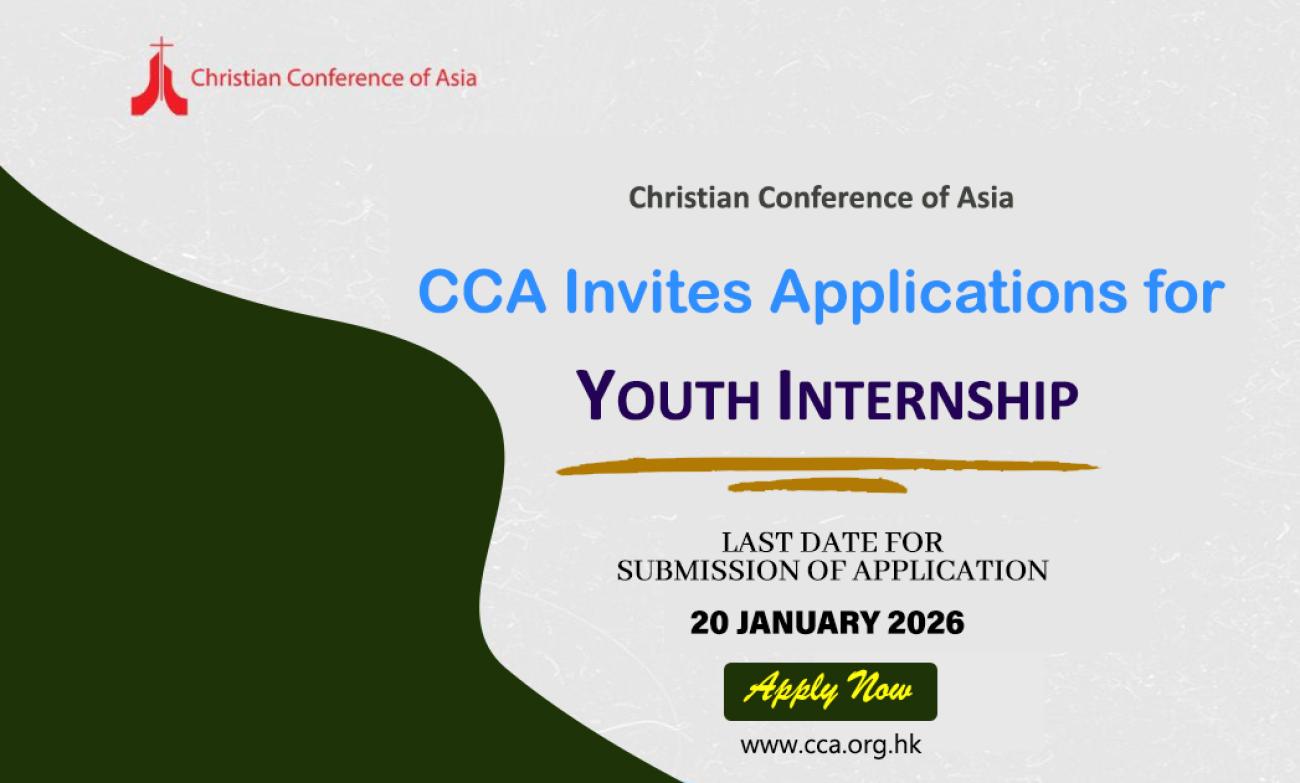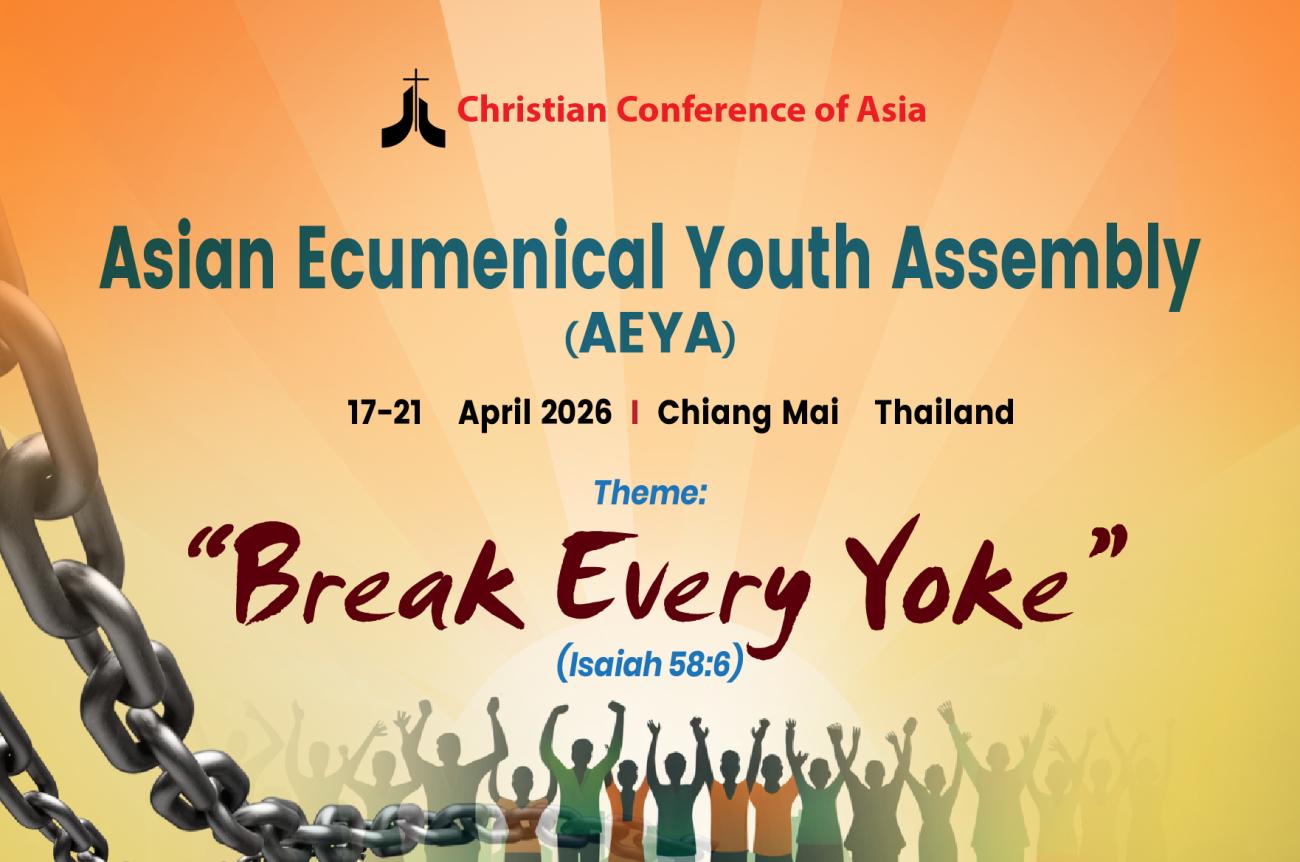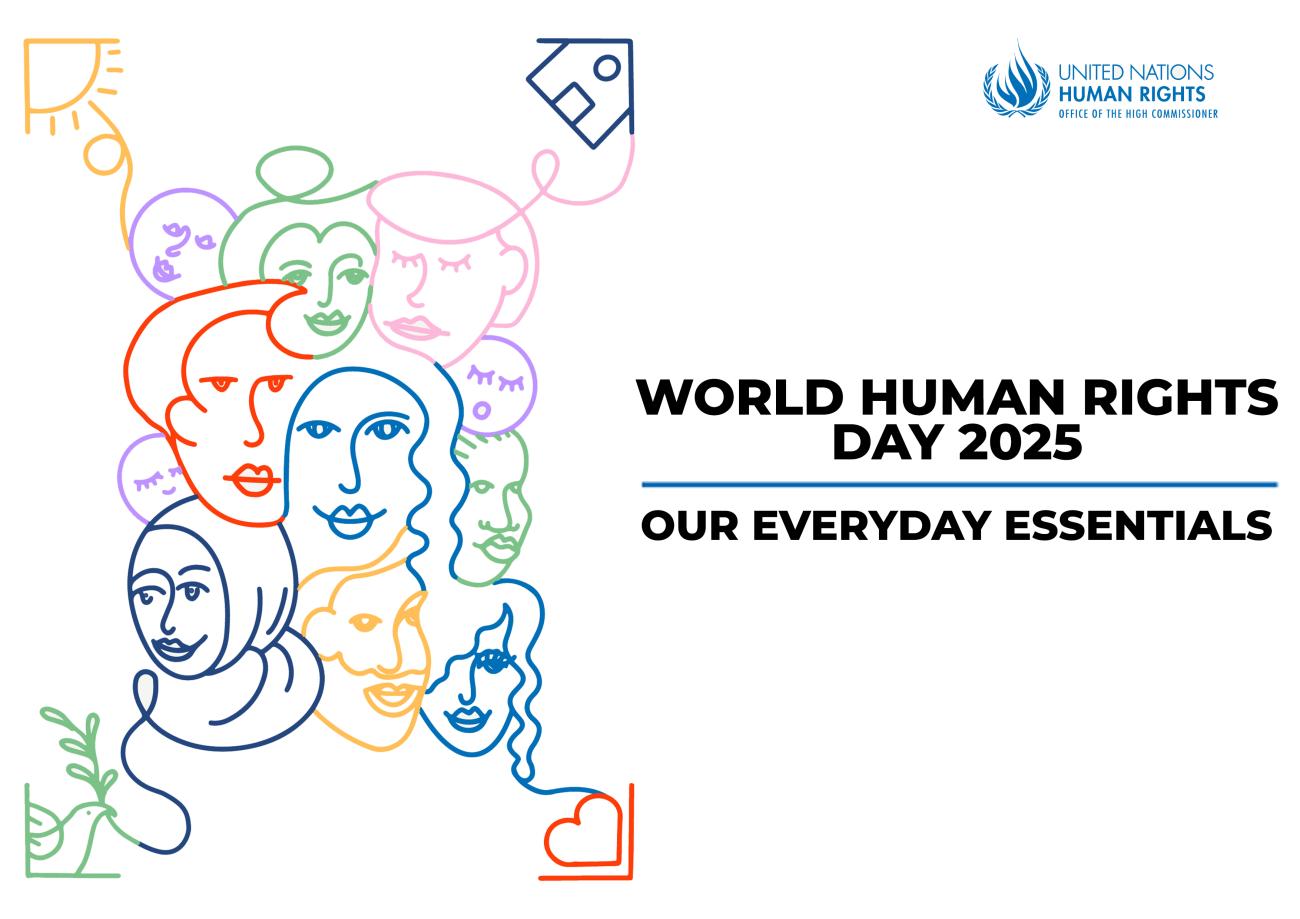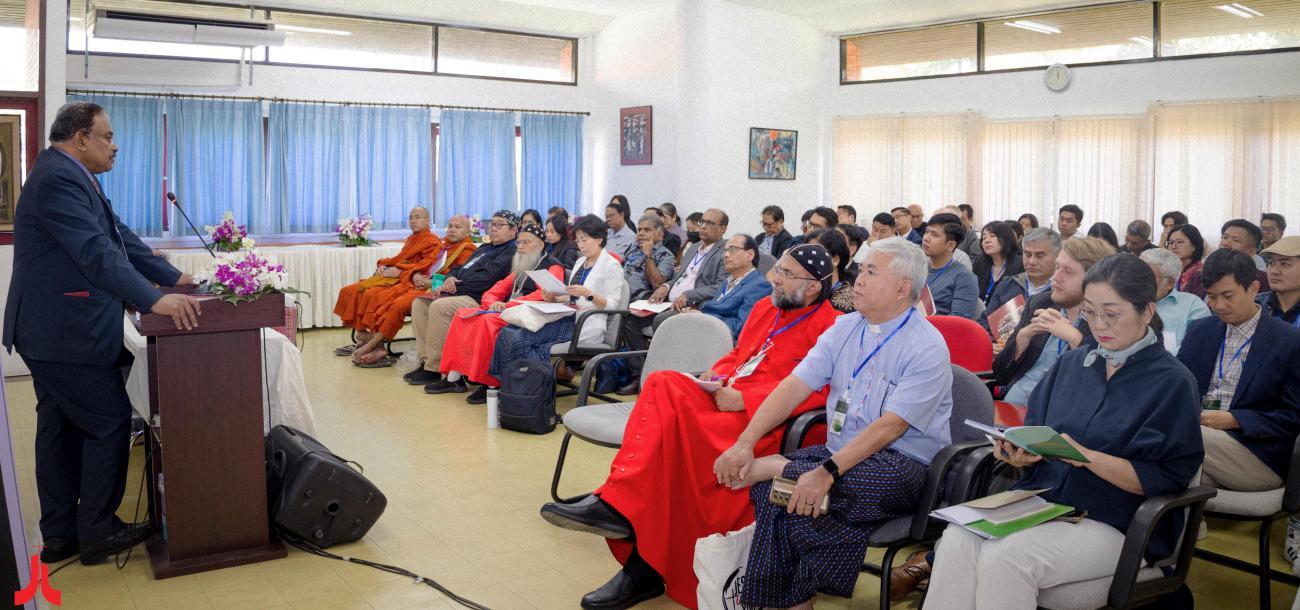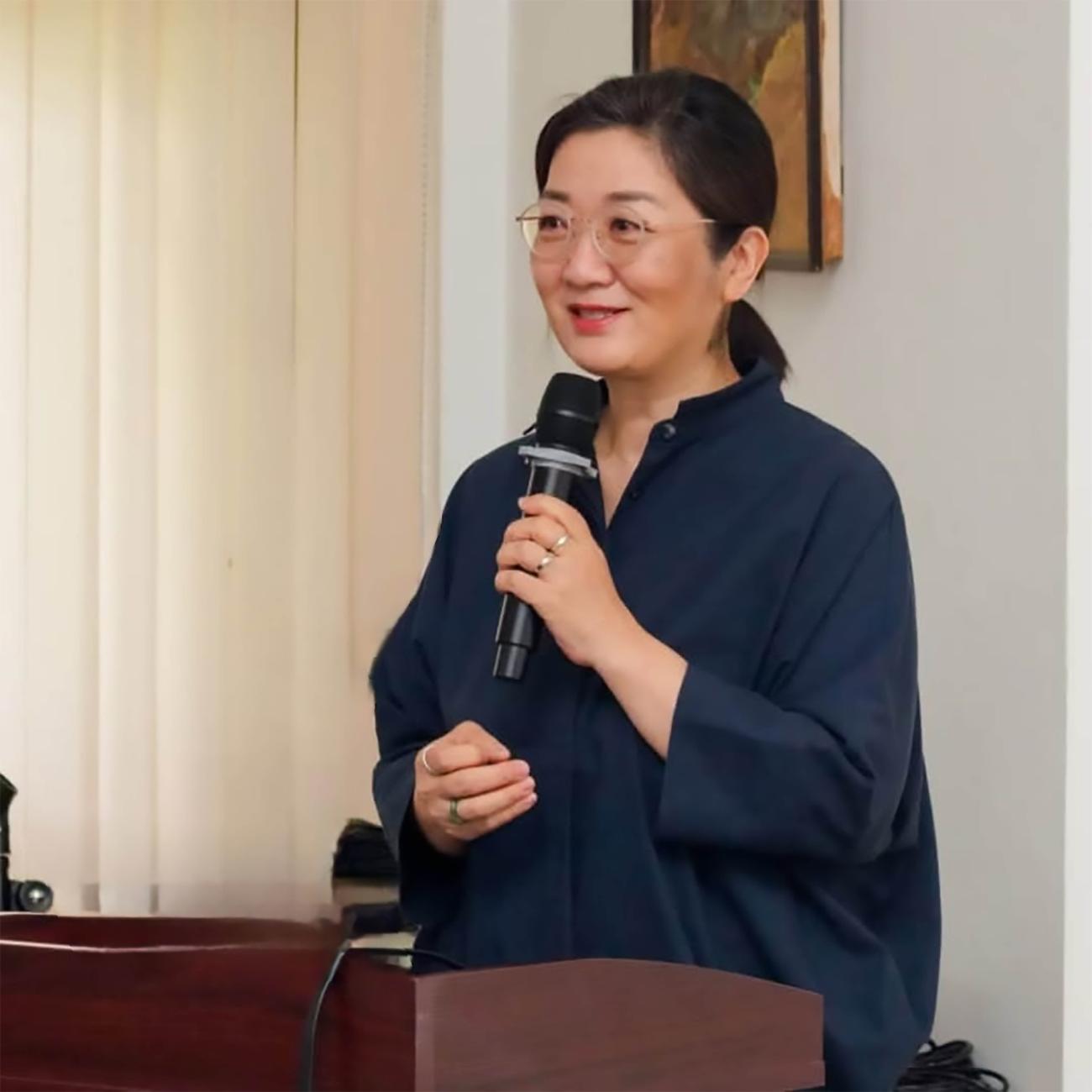Building Peace (BP)
Peace prevails where everyone has fair and equal access to justice and an atmosphere to live in security. Peace sustains only in a situation where everyone is able to participate in shaping their destiny and decision makers are accountable to the people. Peace is, therefore, a state of order, of freedom from fear and want, of being secure. In such a society as Prophet Micah says, “Everyone will sit under their own vine and under their own fig tree, and no one will make them afraid” (Micah 4:4).
On the contrary, it is a matter of serious concern today that we are forced to live in situations where peace is threatened and justice is denied. The greed of powerful nations and individuals exclude others, concentrate only in accumulation of wealth and exploitation of resources, leaving others dispossessed and impoverished. The domination of the rich and the powerful causes discord and adds deprivation. All these factors increase domination, marginalization, violence, conflicts, wars, poverty and sufferings in human life. It is not God’s will that is fulfilled in such a situation, but it contradicts the purposes of God’s ways of living together in the household of God. The living together in the household of God with a collaborative, mutually recognized and respected atmosphere will make the household a place where peace with justice and security prevail. Such a situation requires a radical reversal of the existing systems and conditions, to a context in which “justice will roll down like waters and righteousness like an ever flowing stream” (Amos 5:24). Peace is basically a gift of God, and is related to God’s blessing and God’s graciousness.
Building Peace with Justice: Challenges to Churches in Asia
The absence of peace in the Asian context is to be understood not merely in the contexts of violence and civil wars only. Denial of the basic socio-economic and cultural rights to a vast number of people basically leads to a situation where peace is negated and justice is denied. The end of the Cold War, the growing impacts of globalization and rapid economic growth are making several Asian countries to reposition and redefine their roles both at the regional and at the global levels. While the pivot of international politics is shifting towards the Asia region, the new century also poses several challenges to peace and security in Asia. There are many factors and key stakeholders from within the region as well as outside of the region responsible for threatening peace in Asia and intensifying conflicts. When we agree that civil war and conflicts have already ended in several contexts in Asia, it is also increasingly evident that threat to peace and security at different levels continues to be a pervasive phenomenon in several Asian countries.
Asia today faces an ever increasing level of multifaceted social, economic, political and security challenges. A wide array of problems is precipitating in Asian societies, causing threat to peace and denial of justice. Armed conflicts and violence, increasing poverty, inadequate health care, economic exploitation, environmental degradation and exploitation of natural resources, militarization, arms build-up, nuclearisation, spread of small arms and light weapons, domination and intervention of major powers from outside the region as well as within the region; ethnic and religious conflicts, communal violence, and political unrest; torture, custodial death, suppression of people’s legitimate right to self-determination; lack of rule of law and democratic governance are part of a series of issues affecting Asia’s peace and security.
It is in this context that the Asian churches are called to be peace makers and to be courageous, committed and consistent in their efforts in order to be credible voices in the household of God. Churches are also called to be instruments of God’s purpose in the world, which calls them to take concrete action in peace-building in order to move beyond conflicts. The ecumenical movement itself emanated from the need to be in peace and unity not only within the church, but with the community of people who belong to other faiths. Christian Conference of Asia has been instrumental in nurturing a culture of peace in Asia through various activities ever since it’s founding. Peace with justice and human security continues to be a major concern of the CCA and the following areas will be of special foci of CCA’s mission and witness in this area in the next five years:
- Towards Peace with Justice and Human Security
- Accompanying Churches and Communities in Conflict Situations
- Churches in Action for Moving Beyond Conflicts and Reconciliation
- Churches’ Response to Militarization, Nuclearization and Arms Race in Asia
- Peace Building Training for Church Workers
- Ecumenical Women’s Action Against Violence ( EWAAV)
- Young Asian Ambassadors of Peace in Asia ( YAAPA)
- Eco-Justice for Sustainable Peace in the Oikos
Peace and human security depend on a large extent to the situation where justice prevails, and society is free from any conflict. Conflict in any form contributes to denial of justice and dignity and rights of people and communities. Given the fact that denial of justice are often a precursor to and always a consequence of violent conflicts, churches and ecumenical councils must contribute to their witness in protection of individuals and communities by working with others to build peaceful societies. Justice includes every form of social, economic, political and ecological concerns. It is clear that human security is multi-dimensional.
The issue of peace with justice and human security has been a major concern in Asia in the emerging geopolitical context. For example, the conflict in North East Asia region especially in the Korean peninsula has been a serious concern. In addition to that maritime territorial disputes, growing militarization, and growing sphere of influence of China are other issues and reasons for threat to human security and peaceful coexistence in this region. The new strategic initiative, widely known as the “pivot to Asia” which was launched by the U.S, is a major reason for hampering human security in the region. Despite concerns over the U.S’ strategic goals and plans in Asia, it is a matter of concern in Asia that American military has never been more welcome in Asia than it is today. The Asia region holds seven of the world’s ten largest armed forces and five of the seven US mutual defense treaties – with Japan, South Korea, Thailand, the Philippines, and Australia. With the U.S now explicitly refocusing its strategic attention on Asia, it is expected that a major historical shift is underway which will have wider repercussions in Asia’s strategic security realms and potential for conflicts.
Many other Asian communities are experiencing violence in various forms. Religious intolerance and religious conflicts are increasing in most countries in Asia and some of the worst forms of such conflicts spill over to different parts of certain countries and even beyond the borders. For example, ethnic conflicts and sectarian violence in Rakhine state and Shan state in Myanmar are examples of racial and religious intolerance plaguing a deeply fractured nation still struggling to emerge from half a century of its self-isolation and military rule. Hundreds of people died in clashes between majority Buddhists and minority Muslims belonging to the ethnic Rohingyas. Nepal and Bangladesh are consistently experiencing violence and killings these days. In recent years, politicization of religion has become a way of political parties in Bangladesh to take law and order in their hands. Minority religious communities in Bangladesh – Hindus, Buddhists and Christians – live in a state of fear and terror. Ethnic and religious conflicts and violence kill people in different parts of Pakistan almost every day. Conflicts and violence in the name of religion and ethnicity have become a common trend in other Asian countries such as in Nepal. India is not an exception to this problem of conflicts in the name of religion and ethnicity. Indonesia, traditionally a tolerant society, is now in the grip of religious hatred and intolerance. Sri Lanka is facing experiences of religious intolerance and conflict. Thailand also experiences a similar situation. Discrimination of people on the basis of caste and denial of their human dignity continue to cause social deprivation and marginalization in South Asia. As people and communities in various parts of Asia are constantly struggling for peace with justice and security, the churches in Asia have a task to be active partners in building communities of peace with justice and attain the fullness of life. It is in this context that the Christian Conference of Asia will focus on assisting churches to analyze conflicts situations in their own country situations, and develop methodologies to participate in peace building initiatives. Inter-religious consultations and dialogues will also be held to raise awareness, and to facilitate joint action through inter-religious platforms to contribute towards building peace and sustenance of peaceful societies.
Conflicts in Asia region are multifaceted and among these conflicts, some of the world’s longest serving armed conflicts are still continuing in Asia. The number of Asian countries affected by conflicts has increased during the past quarter of a century. Such conflicts come under the category of sub-national conflicts, which are the most widespread, deadly and enduring form of conflicts, mostly caused by political instability, weak governance, economic insecurity, and vulnerability to natural disasters. The present situation in Asia hampers efforts of peace-building and poverty reduction and leaves the Asian countries in more fragile and vulnerable conditions. Over the past twenty years, there have been 26 subnational conflicts in South and Southeast Asia, affecting half of the countries in this region; often lasting for multiple generations, and for more than 40 years on average. Sri Lanka, West Papua, Myanmar, Mindanao, Southern Thailand, and Bangladesh are examples for subnational conflicts in Asia.
There are several examples in Asia today which experience post conflict or post war situations. Such situations bring many crucial challenges to efforts for sustaining peace and building reconciliation and healing. For example, the war or the violent phase of the conflict in Sri Lanka that plagued the nation for well over four decades came to an end. It has brought new challenges and opportunities to the nation specially related to our ecumenical witness. There are several other similar situations too in Asia. Many crucial questions have emerged in such contexts too, such as what is authentic peace? What is the interrelation between peace and justice? What are the core factors that contribute to reconciliation? How do we deal with and overcome the painful memories of the past? How do we talk of genuine justice without a mechanism for accountability? These questions are foremost in the hearts and minds of the people in post conflict situations when they are prepared to move beyond conflicts or equipped to be permanent peace makers. These contextual questions emerge in a multi faith context where cordiality and confrontation, cooperation and resistance are manifested.
Most conflicts leave the country and the citizens impoverished. It is a time for reconstruction, recovery, reconciliation and trauma healing. One of the major challenges faced by religious leaders is the issue of escalating violence and callous negligence for the protection of life and property of civilian citizens, which includes including women, youth, infants, the old and the disabled. The Christian Conference of Asia has been committed to accompany its member churches and Councils as they move ahead with their work in conflict resolution. CCA has stood in solidarity with churches and communities and accompanied them in situations of crises in South Korea, Philippines, Indonesia, Myanmar, Bangladesh, Sri Lanka, Pakistan, East Timor and Nepal. The CCA is still committed to accompany the churches and communities as they continue to address the decades old struggle for peace and unification in the Korean peninsula, peace and reconciliation in Sri Lanka, struggle of Japanese people against the rearmament and militarization through the change of Article 9 of the peace constitution of Japan, militarization and human rights violations in the Philippines, ethnic conflicts and right to self determination of West Papuans, etc. As these struggles still continue, CCA as a regional fellowship of Asian churches has the responsibilities to continue to be in solidarity with churches in these countries and accompany them in their initiatives in building communities of peace. The CCA will continue with solidarity visits to conflict affected communities; develop a methodology to accompany and make interventions on behalf of such communities through churches and interfaith networks and organize regional interfaith platforms to initiate discussion and strategize on working together to move beyond conflicts and reconciliation.
As several parts of Asia experience and witness armed conflicts and violence, Churches cannot remain as mere spectators. In many parts of Asia, churches live in the midst of fighting between armed forces, insurgent groups or militant outfits that causes many deaths including that of civilians and armed forces. South Asia (Afghanistan, Pakistan and Sri Lanka) alone accounted for two-thirds of the world’s total battle deaths from state-based armed conflict. The region had four times as many battle deaths as the next deadliest region, sub-Saharan Africa. Terrorism and counter-terrorism have also been taking the lives of hundreds of people, especially in South Asia. During the past several years, hundreds of drone strikes in Pakistan have killed thousands of innocent people. Economic, political, developmental, religious, ethnic and social factors contribute to most conflicts and violence in South Asia. Armed insurgency is widespread in different South and South East Asian countries. The influx of small arms and narcotics are considered as major reasons for conflicts and violence in some Asian countries. In certain other contexts, the issue of greater autonomy and reorganization of the state or provincial structures are demanded on the ethnic line.
The nature of armed conflicts in certain other contexts concern the power sharing incompatibility over territory and governance as well as exploitation of natural resources by Private, State sponsored or Multinational Companies. When control over natural resources by local and multinational companies force local communities to leave, the original owners of the land are driven out from their ancestral land. Indigenous communities in several countries in Asia are mostly affected by this. In response to such contexts and situations, Asian churches and Councils have to affirm that peace-building is a shared responsibility of the churches that believe in the values of peace, compassion, forgiveness and reconciliation. Churches being a minority in most Asian countries need to be supported in their mission of peace building which should be carried out by churches in close cooperation with other faith communities and civil society organizations.
In the next five years CCA will be engaged in equipping the churches to become effective prophetic voices of reconciliation and peace-building in local situations of conflicts. Ecumenical initiatives and Inter-faith collaboration in building sustainable peace for moving beyond conflicts will be encouraged and promoted through various programs in the coming years.
Militarization and escalation of arms-build up have been on the increase in Asia. The increase in defense spending has now become a wider Asian phenomenon. Military spending of Asia, for the first time in modern history, overtook the European members of NATO in recent years. While Asia witnesses all kinds of strategic and security challenges and threats – from 19th century style territorial disputes to economic rivalry and potential new nuclear weapons states, several Asian countries are witnessing new waves of arms build-up and increase in defense budgets. A variety of factors explains the new wave of increased military budgets in Asian countries. Despite the negative impact of the global financial crisis, almost every country in South-East Asia is now involved in arms build-up, which makes it one of the fastest-growing regions for defense spending in the world. China, Japan, India, and South Korea accounted for more than 80 per cent of total Asian defense spending and Pakistan, Indonesia, Malaysia, Singapore, Thailand and Vietnam were all investing in improving air and naval capacities. The shifts in policies of purchasing most modern arms, lead to a situation where the Asia region is sliding into an arms race.
Today, among the nine countries that have nuclear weapons, four of them are in Asia – China, India, Pakistan and North Korea. With India and Pakistan testing nuclear-capable ballistic missiles, close on the heels of North Korea’s test launch of a long-range rocket, Asian neighbors are living in the shadow of strategic mistrusts that is holding back nuclear disarmament. Owing to this mistrust among Asian countries, the future of extended nuclear deterrence in East Asia as well as the nuclear disarmament push in Asia was stalled. Other complexities Asia faces in this regard relate to the geopolitical scenario: US allies unwilling to weaken the ‘extended deterrence’ umbrella under which they are defended by American nuclear weapons; China unwilling to cap the growth or modernization of its nuclear arsenal; and the China-India-Pakistan triangle of mistrust and arms competition adding another major obstacle to nuclear arms control and disarmament in Asia. It is observed that the situation could be worsened if the high cost of conventional weapons ever drove a future US Administration to expand the role of nuclear armaments in America’s strategic ‘pivot’ back to Asia. All these factors reflect the susceptibility and the challenges faced in living together in the household of God in peace and security.
The surge of military expenditures in the region these days, by its very nature, reflects the vulnerability of peace and security in Asia. More precisely, it reflects the susceptibility and the challenges faced to live together in the household of God in peace and security. The CCA’s role in this context is to sensitize the churches in Asia about the increasing trend of arms race and militarization and equip them for advocacy among governments and policy makers. Inter-faith initiatives will be made to address the issue in the national contexts.
Churches mission in peace building and peace theology offer a way of life that extends beyond traditional concepts of churches’ preaching and teaching on peace and reconciliation. As the conflicts and violence in Asia are increasing these days, more churches in different Asian countries are actively participating in reconciliation mission in their local contexts as part of their faith and witness. However, the churches’ peace building mission needs to be adequately equipped for which systematic engagement of learning and training has to be arranged. Potential and prospective leaders in peace building are to be identified and trained in order to undertake and implement the peace building mission successfully. Although the concept of knowledge about peace building is growing, a lack of clarity about what makes peace building in local context effective as part of churches’ mission persists. This becomes more relevant when churches live as minorities amidst majority religious communities. Although considerable knowledge exists at different levels, it does not permeate in the peace building ministry of churches or ecumenical organizations. This situation warrants the need for a systematic approach in peace building by churches engaged in their local contexts. The new initiative of CCA in developing a peace building training for church workers and peace activists within the broader ambit of peace will aim to provide opportunities to enhance the understanding of sustainable peace building and leadership. With its focus on training for church workers and activists from the church backgrounds, the proposed program will also engage representatives from other faiths.
The role of CCA in this context will be to facilitate a series of training in different countries in collaboration with other ecumenical actors and players involved in peace building, to develop the capacity and enhance the competency of church workers in peace building and reconciliation initiatives of churches in conflict affected societies.
Violence against women is a form of discrimination and a violation of human rights. It causes untold misery, cuts short lives and results in countless women living in pain and fear in every country in the world. Violence against women harms families across generations, impoverishes communities and reinforces other forms of violence throughout societies, because violence stops women from fulfilling their potential which in turn restricts economic growth and undermines development.
Although there has been considerable progress in creating international frameworks and covenants for ending violence against women, new forms of violence have emerged and, in many countries, advances made towards equality and freedom from violence, have unfortunately been eroded or are under serious threat. In reality, there is an upsurge of violence against women and girls, cutting across all socio-economic groups, education levels and regions. The continued prevalence of violence against women proves this critical issue has to be tackled with political commitment, visibility and resources.
Asia region is no exception to this phenomenon. While progress and modernization is evident everywhere across the region, this kind of progress is unacceptable if 50 percent of the population – women and girls- continue to live under constant fear and terror of violence. Forms of violence often take up inhuman and intolerable dimensions ranging from kicking, beating, burning, maiming, being kept locked without food for days, sexual assaults, harassment, trafficking, to being abused and gang-raped. The indescribable pain and suffering not only harms them physically and psychologically, it fractures families and communities, prevents women from exercising their rights, compromises their health, and restricts them from becoming fully productive and realizing their full social and economic potential. Studies reveal that the social and economic costs of violence against women are enormous, as it reduces human capital, decreases productivity and slows down poverty reduction.
As more and more Asian women become victims of violence and conflicts, they form the majority of civilian deaths; the majority of refugees; and are often the victims of cruel and degrading practices, including sexual-abuse. Women’s security is also threatened by unequal access to resources, services and opportunities. Harmful customary practices, such as honor killing, burning brides and widows, and child marriage are still in existence because of women’s vulnerability in economic independence and security. Support and protection of women and girl children caught up in war torn and conflict ridden areas is also an issue that has to be seriously addressed. Sri Lanka itself has about 85,000 war widows, and children who are either permanently or temporarily disabled. Rape and cruelty towards women and children, as weapons of war are added atrocities to the long list of forms of violence against women. Although the United Nations Security Council has passed resolutions on Women Peace and Security which recognize and address the experiences of women and girls in conflict and post conflict situations, Asian countries have not been paying serious attention to such initiatives.
Religion also plays a significant role in determining the status of women. Religion is both an institutional and private reality and therefore religious teachings and affiliations have a significant influence on women, their status in the community and how they are treated by society. Religious communities and institutions convey values and belief systems to their members through texts, traditions, teachings, doctrines and counselling. These beliefs can be comforting while in trouble, and at the same time can also be misused or misinterpreted to excuse or condone abusive behavior.
The scope and extent of violence against women are a reflection of the degree and persistence of discrimination that women continue to face. Therefore, violence can only be eliminated by addressing discrimination, promoting women’s equality and empowerment, and ensuring that women’s human rights are fulfilled.
The upsurge in violence with impunity is deeply rooted in religious, cultural and social constructs that are roadblocks in the campaign for elimination of violence against women. In these circumstances it is the task of both religious and secular leaders, to recognize that the very same roadblocks can be used as resources for victims of violence. Women should be able to access the resources of community based advocacy and shelter and the support and counsel of faith based communities.
It is in this context that the Asian Churches are called on to respond to the appalling status of women; to analyze theologically and deeply the Christian understanding of violence and to actively engage in ecumenical advocacy networking for elimination of discrimination and violence in all forms.
The CCA has been actively involved in upholding the rights and dignity of women, especially rights of indigenous women and migrant workers. In the coming years, CCA will address these issues through the “Ecumenical Women’s Action Against Violence (EWAAV)” program. CCA will also have capacity building programs on Conflict Resolution, Peace building and Awareness building of International instruments and agreements that hold their Governments duty bound to safeguard and protect women from violence and human rights abuse.
A movement for peace and sustainable development in Asia region requires a new generation of peace activists committed to work for peace and harmony. Youth have always been in the forefront of transformation. Young people are lured to conflict situations in many areas in Asia. In some cases young people are directly involved in conflict situations and at the same time they are also be potential stakeholders in conflict resolution and peace building. However, to build a peaceful and harmonious Asia, youth can play very important and positive roles as ambassadors of peace in their communities and commit themselves for peace building, reconciliation and post conflict reconstruction of conflict affected societies. One significant role that youth can play in peace and conflict resolution is for them to be change makers. The young people in Asia will be in a better position to discover the joy of living together and understand the importance of peaceful co-existence. Asia’s long nurtured and valued tradition of religious harmony and co-existence can more easily be practiced among the younger generation. This approach needs to be developed in an interfaith framework.
The CCA with the cooperation of its constituencies and regional and national interfaith organizations will be in a better position to initiate and strengthen national and regional inter-faith youth networks. The proposed program of Young Ambassadors of Peace in Asia (YAPA) aims to identify and train young peace makers in Asia. The YAPA will play its role as accompaniers to advocate the issues of peace and reconciliation. CCA plans to assist the churches in Asia to train a new generation of young peace activists for building peace, healing and reconciliation and interfaith harmony; and develop a team of 200 Young Ambassadors of Peace in Asia (YAPA)
Eco-justice is the basis of peace and harmony of the ‘Oikos’ and in this context eco-justice is not merely concerned with ecology or “environment” alone. As eco-justice links to issues of hunger, poverty, sustainability of natural resources, production of energy and its use, economic development, equitable distribution of wealth, debt relief, fair trade, environmental safety, etc., all these factors are ultimately needed to sustain the oikos in balanced ways and also to build a peaceful society.
The world is passing through a period of immense challenges to its sustainability. Billions of people continue to live in poverty and are denied a life with dignity. As the inequalities rise, disparities in opportunities become enormous and the societies become unbalanced in terms of distribution of wealth, power, employment, health care, education facilities, etc. The exploitation of natural resources and unsustainable development policies cause more frequent and intense natural disasters, loss of biodiversity, forced displacements, humanitarian crises. In such situations, people are forced to experience lack of adequate support to their peaceful living. The communities and nations experience spiraling conflicts, violent extremism. Often impoverished and unemployed young people are easily lured to terrorism.
Eco-justice is linked with social justice an essential parameter for building peace. Healthy earth communities require advocacy and action on urgent environmental issues in ways that connect with struggles for social and economic justice. Eco-justice envisions and values ecology and justice together, since there will be little environmental health without socio-economic justice, and vice versa. Today, there is growing appreciation for and “construction of what is often called an ‘eco-justice’ ethic…that holds together concerns for the natural world and for human life, that recognizes that devastation of the environment and economic injustice go hand in hand, and that affirms that environmental and human rights are indivisible” (Pedersen, 1998). The vision and values of eco-justice express a spiritually grounded moral posture of respect and fairness toward all creation, human and nonhuman. Eco-justice is shaped by religious insights and scientific knowledge, interwoven with social, economic and political experience – all these factors are essential for a peaceful society.
Christian theology teaches us that creation is the house of life within which human beings are called to dwell in peace and harmony. Churches have the framework here to bring about eco-justice as a priority concern for which churches ought to work for eco-justice literacy which will contribute to develop an ethic of intrinsic worth of protecting all God’s creation and building peace with justice in God’s ‘oikos’. As the vulnerable situations in Asia continue to grow, Asian churches need to be involved in eco-justice concerns more deeply, for which CCA will have to take a leading role in facilitating and equipping its constituencies in order to emphasize and develop an ethic of eco-justice for sustaining peace. It is in this background that CCA will engage in assisting the Asian churches to promote eco-justice literacy through awareness programs, encourage biblical and theological reflections of eco-justice for sustaining peace and to conduct consultations and studies to strategize on a plan of action that will lead “Towards a Culture Eco-justice Ethics for Sustaining Peace in Asia.”

